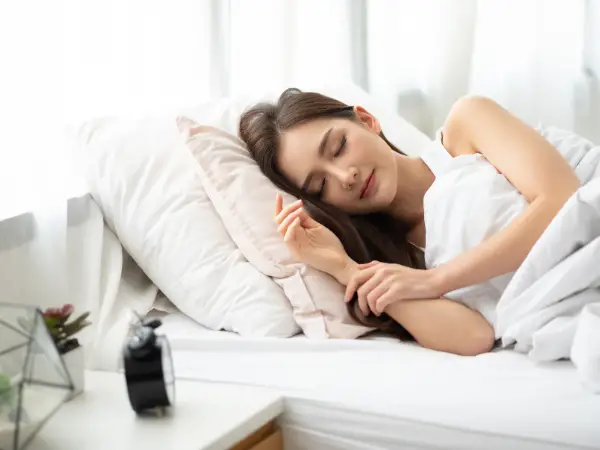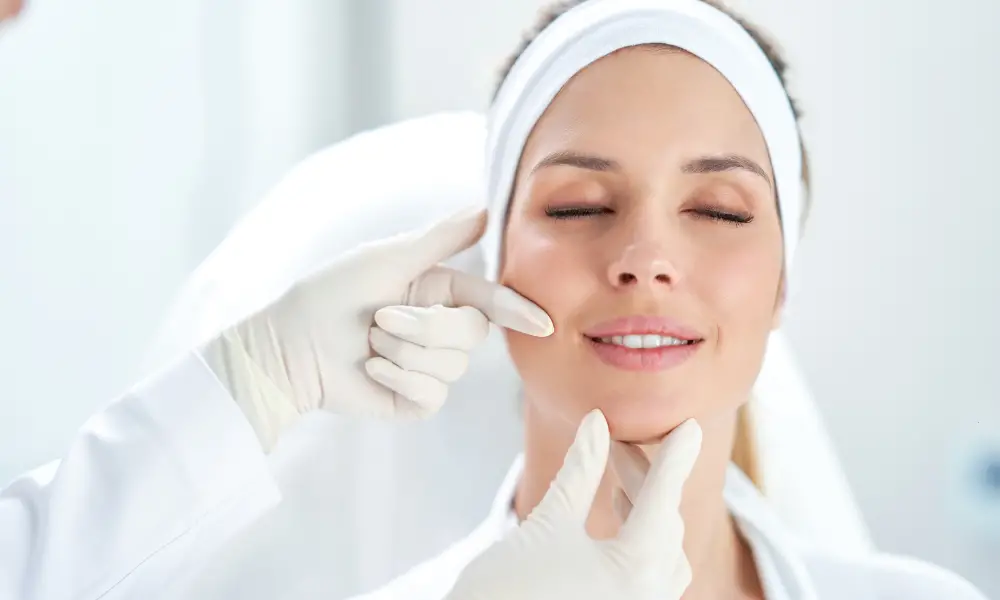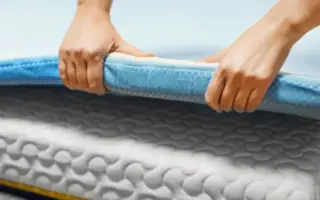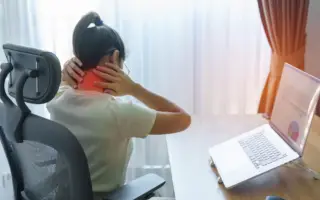You should wait at least 4 hours after receiving Botox before sleeping on your side. This allows the Botox to settle properly and minimizes the risk of shifting.
Botox treatments have become a popular way to reduce wrinkles and fine lines, giving patients a more youthful appearance. The procedure is quick and relatively painless, but post-treatment care is crucial for optimal results. One common question that arises is how soon one can return to their normal sleeping position without affecting the Botox’s effectiveness.
Ensuring you adhere to the recommended time frame before lying on your side can significantly impact the success of the treatment. Patients are advised to stay upright for a while, as this precaution helps in achieving the desired aesthetic outcomes without complications.
Table of Contents
What Is Botox?
Botox is a brand name for a substance called botulinum toxin. This protein is known for its ability to relax muscles, which can reduce the appearance of wrinkles. Doctors also use it for various medical conditions. Botox works by temporarily blocking nerve signals in the muscles where it is injected. The result is smoother skin and a more youthful appearance. The procedure is quick, with minimal discomfort, and requires no downtime, making it a favorite choice for many.
Sleeping Positions After Botox
Getting Botox can leave you with a lot of questions, especially about sleep. Can you snooze on your side without messing things up? Let’s dive into the best sleeping positions after Botox to keep your results looking their best.
Immediate Aftermath
Right after your Botox treatment, the way you sleep is super important. Here’s why:
- Stay upright for 4 hours. This helps Botox work right.
- Avoid pressure on your face. It can move the Botox around.
What’s the best way to sleep? On your back. This keeps everything in place. Think of it as giving your face a little break while the Botox settles.
After 24 Hours
It’s been a day since your Botox. Now what? Here’s a quick guide:
- Still, sleep on your back. Yes, even after 24 hours.
- Use a travel pillow if you move a lot. It helps keep you on your back.
Also, keep your head a bit raised. This can reduce swelling. A few extra pillows can do the trick.
After 48 Hours
Two days in, and you might be wondering, can you switch sides now? Here’s the scoop:
- Back sleeping is best, but side sleeping is okay now.
- Be gentle if you turn to your side. No squishing your face into the pillow.
And remember, keep your skincare gentle. No rubbing or pressing on your face.
After 1 Week
A week has passed, and you’re likely itching for your normal sleep position. Here’s the final word:
- Most positions are safe now, but gentle care is key.
- Watch for swelling or bruising and adjust if needed.
By now, your Botox should be settled. Enjoy your results and your sleep!
Risks Of Sleeping On Your Side Too Soon
Are you wondering how long after Botox you can return to your favorite sleeping position? It’s crucial to wait before you rest on your side following Botox injections. Side sleeping too soon can lead to unwanted effects and impact your results. Let’s dive into the risks you may face if you rush back to your cozy side-sleeping routine.
Impact On Botox Distribution
After receiving Botox, the injected areas need time to stabilize. Pressure on these areas can shift the Botox from where it was intended. This could alter the smooth look you aim for. Within the first 24 to 48 hours, the Botox is still settling. Staying off your side during this time is crucial. Here’s why:
- Pressure may cause migration: Lying on your side can apply uneven pressure, causing Botox to move.
- Uneven results: If Botox moves, one side may appear different from the other.
Experts suggest back sleeping to ensure even distribution. A table of do’s and don’ts could help you remember the best practices for post-Botox care.
Swelling And Bruising
Side sleeping soon after Botox can lead to unwanted swelling and bruising. Here’s what you need to know:
- Increased blood flow: When you lie on your side, blood flow to that area can increase, leading to swelling.
- Pressure: The weight of your head can cause pressure, worsening bruising.
To minimize these risks, sleep on your back with your head elevated. This position helps reduce swelling and supports healing.
Precautions To Take
Taking the right precautions after Botox is key to achieving the best results. Follow these guidelines:
- Avoid touching the area: Keep your hands away to prevent irritation.
- Stay upright: Keep your head elevated for the first few hours after treatment.
- Use extra pillows: They can help maintain a back-sleeping position.
Be patient and give your body the time it needs to adjust to the Botox.
When To Contact Your Doctor
Sometimes, side effects may occur after Botox. It’s important to know when to seek medical advice. Contact your doctor if you notice:
- Unusual pain: Pain that is not typical post-treatment.
- Asymmetry: One side of your face looks different from the other.
- Signs of infection: Redness, heat, or pus at the injection site.
Early intervention can help manage any issues and ensure your safety.

Managing Discomfort While Sleeping
After receiving Botox treatments, many wonder about the best sleeping positions. It’s crucial to avoid pressure on the treated areas to ensure the best results. For those used to sleeping on their side, this can be a challenge. Proper rest is essential, but so is protecting the Botox work. Let’s explore effective methods to manage discomfort and maintain the integrity of the treatment while sleeping.
Use Of Cold Compresses
Sleep discomfort after Botox may occur. Cold compresses can help. They soothe the area and reduce swelling. Here’s how to use them safely:
- Wrap the compress: Always wrap your cold pack in a cloth. Direct skin contact can cause harm.
- Timing: Apply for 15 minutes, then take a break. This prevents skin damage.
- Frequency: Repeat every hour as needed. It eases discomfort and aids sleep.
Remember, too much cold can harm your skin. Be gentle. A table of dos and don’ts for cold compress use can guide you:
| Do | Don’t |
|---|---|
| Use a cloth barrier | Apply ice directly to the skin |
| Limit to 15-minute sessions | Use for extended periods |
| Repeat hourly if needed | Ignore skin discomfort |
Over-the-counter Medications
If you feel sore after Botox, certain medications can help. Always check with your doctor first. Over-the-counter options include:
- Acetaminophen: It eases pain without increasing bruising.
- Antihistamines: These can help if you experience itching or swelling.
- NSAIDs: These should be avoided right after Botox, as they can increase bruising.
Here’s a quick reference for safe medication use post-Botox:
| Medication | Use | Precaution |
|---|---|---|
| Acetaminophen | Pain relief | Don’t exceed the recommended dose |
| Antihistamines | Address itching/swelling | May cause drowsiness |
| NSAIDs | Generally avoid | Can increase bruising |
For best results, follow these guidelines and consult your healthcare provider for personalized advice.
Safe Sleep Guide After Botox
Getting Botox means taking extra care of how you sleep. Experts say not to sleep on your side right after. This guide will tell you the safe ways to sleep after Botox.
Sleeping On Your Back
After Botox, sleeping on your back is best. This keeps pressure off your face. Here’s why:
- It prevents Botox from moving to areas where it wasn’t intended.
- Reduces swelling and bruising by keeping your head elevated.
To make back-sleeping easier, consider these tips:
- Use a pillow that supports your neck.
- Place a pillow under your knees for comfort.
- Try a sleep mask to block out light.
Pillows And Cushions
Pillows and cushions are key for a good sleep after Botox. They help keep you on your back. Look for:
- Memory foam pillows that mold to your neck.
- Wedge pillows to elevate your head and reduce swelling.
Set up your sleep space like this:
| Pillow Type | Position |
|---|---|
| Memory Foam | Under head |
| Wedge | Under back |
Sleeping Aids
Some people find new sleeping positions hard. Sleeping aids can help. Consider:
- Eye masks to keep it dark.
- White noise machines for soothing sounds.
- Lavender scents to relax you.
Also, avoid caffeine before bed. It makes sleeping hard.
Other Tips For Safe Sleep
Here are more tips for a safe sleep after Botox:
- Avoid alcohol as it can increase swelling.
- Stay hydrated with water to help your body heal.
- Keep your bedroom cool to reduce sweating and swelling.
Remember, a good night’s sleep helps Botox work better and faster.
When To Resume Normal Sleep Positions
After getting Botox, many wonder when they can sleep on their side again. It’s important for the Botox to settle correctly. Knowing when to resume normal sleep positions is key for the best results. Let’s dive into what you need to know.
Monitoring Your Recovery
Right after Botox, your body needs time to absorb it properly. For the first 4 hours, avoid lying down. Then, for 24 to 48 hours, sleeping on your back is best. This prevents pressure on the treated areas. Here’s what you should watch:
- Swelling or bruising: These are common and should fade.
- Sensitivity: The treated area may feel different. This is normal.
- Results: Notice how the Botox is working over a few days.
Keep a simple recovery diary. Note any changes or feelings around the treated areas. This helps in tracking your recovery. By doing so, you’ll know when it’s safe to return to your normal sleep position.
| Time After Botox | Recommended Sleep Position |
|---|---|
| 0-4 Hours | Stay upright |
| 4-48 Hours | Sleep on your back |
| After 48 Hours | Gradually resume side sleeping if comfortable |
Long-term Care
For long-lasting Botox results, good skin care and sleep habits are vital. Here are some tips:
- Stay hydrated: Drink plenty of water. It keeps your skin healthy.
- Use sunscreen: Protect your skin from sun damage every day.
- Maintain a skincare routine: Cleanse and moisturize your face daily.
Consider your sleep environment too. A comfortable pillow and positioning can make a big difference. They ensure you don’t put too much pressure on the treated areas. Over time, you’ll find the perfect balance between enjoying your Botox results and having a good night’s sleep.
Remember, every person’s recovery is unique. Listen to your body and follow your doctor’s advice. This ensures the best outcome for your Botox treatment.
Frequently Asked Questions
What If I Accidentally Sleep On My Side After Botox?
Sleeping on your side after Botox might affect results. Try to sleep on your back for the first night. If you shift, don’t panic; contact your provider for personalized advice. Small shifts typically don’t cause major issues.
Can Botox Migrate After 24 Hours?
Botox typically stays where injected and doesn’t migrate after 24 hours. Movement is most likely within the first few hours post-treatment.
How Long Should I Move My Face After Botox?
Avoid moving your face for at least 4 hours after Botox treatment. This allows the Botox to settle properly and ensures optimal results. Always follow your healthcare provider’s specific advice for aftercare.
How Long Does It Take For Botox To Settle?
Botox typically takes 3-5 days to start showing effects, with full results visible after about 2 weeks.
Conclusion
Resting on your side post-Botox requires patience for optimal results. Aim for a 24-hour wait before side-sleeping to avoid pressure on treated areas. Remember, safeguarding the effects of your treatment ensures lasting beauty and satisfaction. Sweet dreams, and may your Botox results be as restful as your slumber.



